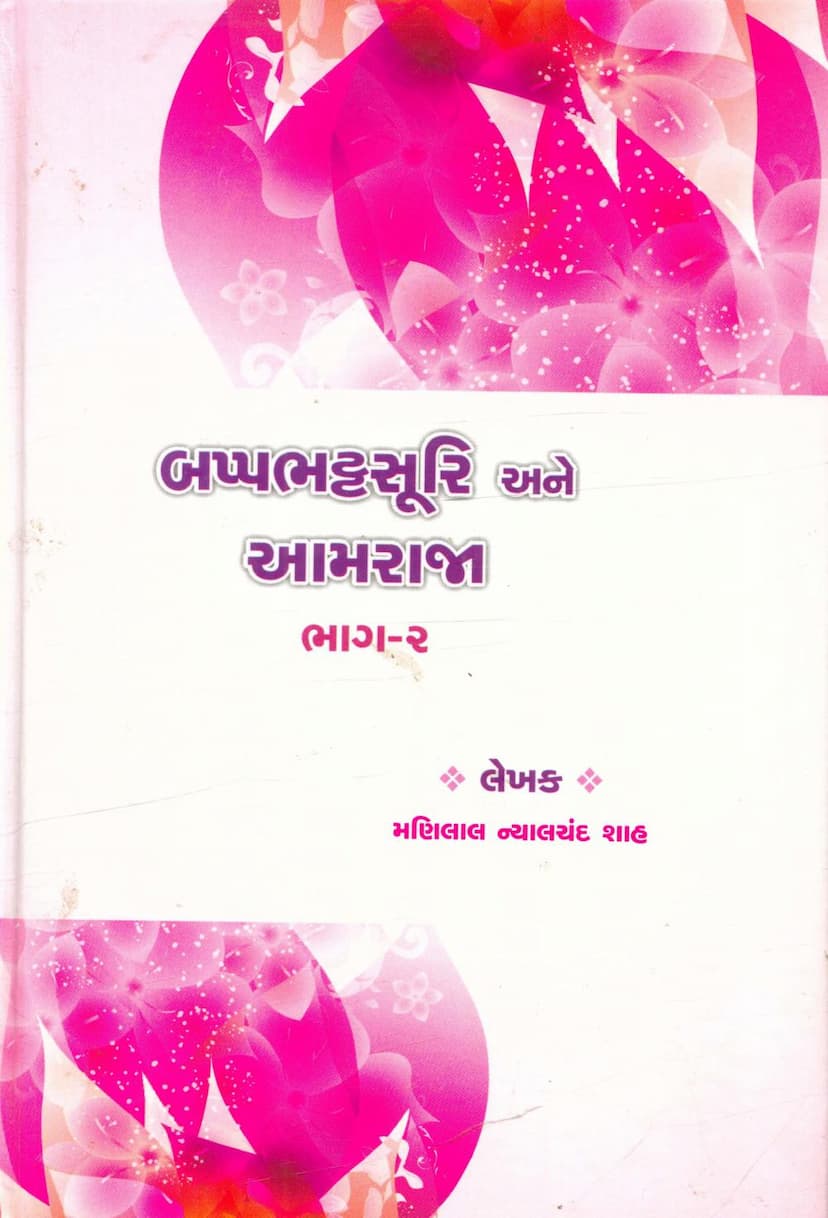Bappabhattasuri Ane Aamraja Part 02
Added to library: September 1, 2025

Summary
This is a comprehensive summary of "Bappabhattasuri Ane Aamraja Part 02" by Manilal Nyalchand Shah, published by Jin Gun Aradhana Trust. The book details the life and exploits of Bappabhattasuri, a prominent Jain Acharya, and King Aamraja.
The book is presented as the second part of a series, with the first part having been well-received, leading to high demand for the continuation. The preface highlights the author's objective to present the biographies of great historical figures, finding them particularly engaging for readers due to the novel information they offer.
Key Themes and Content:
- Bappabhattasuri's Victories: The book extensively covers Bappabhattasuri's challenges and victories against Shankaraacharya and Buddhism. It emphasizes his intellectual prowess and his ability to defend and propagate Jain Dharma.
- King Aamraja's Devotion: It delves into King Aamraja's worship of the Jain faith and its principles of Ahimsa (non-violence).
- Pilgrimages: The text describes Bappabhattasuri and Aamraja undertaking pilgrimages to holy sites like Shatrunjaya and Girnar, often accompanied by a large assembly (Sangh).
- Digambara Opposition: It mentions the opposition faced from the Digambara sect, particularly concerning their actions at Girnar.
- Bhojraja's Conversion: The book highlights how Bhojraja, Aamraja's grandson, embraced Jainism upon ascending the throne.
- Intellectual Debates and Teachings: The narrative is rich with descriptions of debates, philosophical discussions, and Bappabhattasuri's teachings, often involving complex concepts like the nature of the soul, the path to liberation, and the adherence to vows.
- Shankaraacharya's Journey: A significant portion details Shankaraacharya's intellectual journey, his debates, his temporary immersion in worldly pleasures (including learning Kamashastra), and his eventual return to his spiritual path. This part explores the concept of "Parakaya Pravesh" (entering another's body) as a narrative device.
- Ahimsa and Kingship: A crucial discussion revolves around the compatibility of Ahimsa (non-violence) with a king's duties. Bappabhattasuri argues that a king can uphold Ahimsa even while defending his kingdom and subjects, by using force only when necessary and with righteous intent, rather than for cruelty or personal gain. This differentiates justified action from violence.
- The Strategy of Vardan Kunjara: The book details the strategic use of intellectual debate by the Buddhist scholar Vardan Kunjara against King Dharmaraj of Gauda. This highlights the use of intellectual warfare to gain political advantage and spread religious influence.
- The Transformation of King Aamraja: The narrative shows King Aamraja's gradual transformation under Bappabhattasuri's guidance, moving from initial skepticism and apprehension to becoming a devout follower and patron of Jain Dharma.
- Bappabhattasuri's Asceticism and Divine Powers: The text illustrates Bappabhattasuri's commitment to spiritual practices, his mastery of mantras, and his ability to manifest divine power, as seen in his interactions with deities and his followers.
- The Destruction of Jain Tirths and Subsequent Revival: The book touches upon the destruction of Jain pilgrimage sites like Jagannath and Jirawala by Shankaraacharya and his followers, followed by the efforts of Jain acharyas and kings to restore and protect these sacred places.
- Bappabhattasuri's Legacy: The narrative concludes with Bappabhattasuri's enduring influence, his disciples carrying on his teachings, and the eventual success of King Bhoj in upholding Jain principles and expanding its influence.
- Social and Religious Commentary: Throughout the narrative, the author interweaves social and religious commentary, discussing the importance of ethical conduct, the perils of worldly desires, the nature of true devotion, and the challenges faced by Jainism in its historical context. The book also touches upon the concept of the transmigration of souls and the consequences of karma.
- The Later Periods and Decline of Jainism: The latter chapters touch upon the historical context, discussing the decline of Jainism in certain regions due to internal schisms, lack of proper guidance, and the rise of other religious movements, attributing this to a lack of sustained effort and internal conflicts.
Overall Message:
"Bappabhattasuri Ane Aamraja Part 02" appears to be a historical and spiritual narrative that aims to educate readers about the significant contributions of Bappabhattasuri and King Aamraja to Jainism. It highlights the importance of intellectual strength, unwavering devotion, ethical conduct, and the continuous struggle to preserve and propagate religious principles in the face of opposition. The book emphasizes the power of faith, knowledge, and righteous action in achieving spiritual and societal well-being.